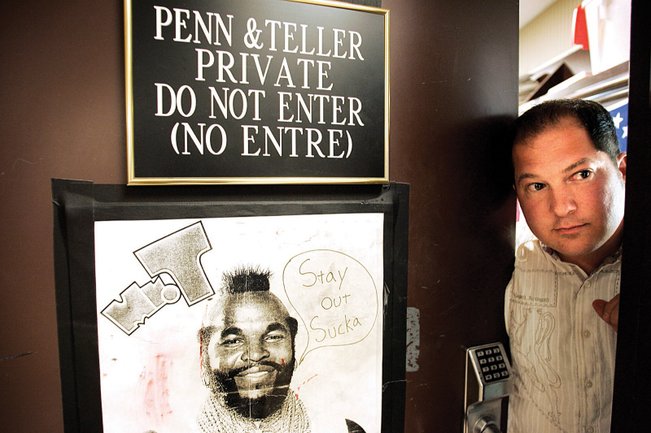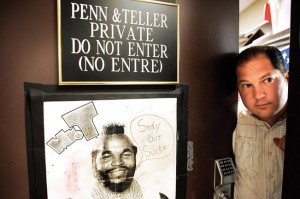This is the third excerpt from a magazine article in Belgravia, an Illustrated London Magazine, published in 1878. It describes the history of props in Western European theatrical traditions up to the late nineteenth century. I’ve split it into several sections because it is rather long and covers a multitude of subjects, which I will be posting over the next several days.
Stage Properties by Dutton Cook, 1878
The maker of properties, although an important aid to theatrical representations, is never seen by the audience; he is of scarcely less value to the stage than the scene-painter, but he is never called before the curtain to be publicly congratulated upon his exploits. His manufactory or workshop is usually in some retired part of the theatre. He lives in a world of his own—a world of shams. His duty is to make the worse appear the better article; to obtain acceptance for forgeries, to create, not realities, but semblances. He does not figure among the dramatis personæ; but what a significant part he plays! Tragedy and comedy, serious ballet and Christmas pantomime, are alike to him. He appears in none of them, but he pervades them all; his unseen presence is felt as a notable influence on every side. He provides the purse of gold with which the rich man relieves the necessities of his poor interlocutor, the bank notes that are stolen, the will that disinherits, the parchments long lost but found at last, which restore the rightful heir to the family possessions. The assassin’s knife, the robber’s pistol, the soldier’s musket, the sailor’s cutlass, the court sword of genteel comedy, the basket-hilted blade that works such havoc in melodrama, all these proceed from his armoury; while from his kitchen, so to speak, issue alike the kingly feasts, consisting usually of wooden apples and Dutch-metal-smeared goblets, and the humbler meals spread in cottage interiors or furnished lodgings, the pseudo legs of mutton, roast fowls or pork chops—to say nothing of those joints of meat, shoals of fish, and pounds of sausages inseparable from what are called the ‘spill and pelt’ scenes of harlequinade.
Of late years, however, our purveyors of theatrical entertainments, moved by much fondness for reality, have shown a disposition to limit the labours of the property-maker, to dispense with his simulacra as much as possible, and to employ instead the actualities he but seeks to mimic and shadow forth. Costly furniture is now often hired or purchased from fashionable upholsterers. Genuine china appears where once pasteboard fabrications did duty—real oak-carvings banish the old substitutes of painted canvas stretched on deal laths and ‘profiled,’ to resort to the technical term, with a small sharp saw. The property-maker, with his boards and battens, his wicker-work and gold leaf, his paints and glue and size, his shams of all kinds, is almost banished from the scene. The stage accessories become so substantial that the actors begin to wear a shadowy look—especially when they are required to represent rather unlife-like characters. Real horses, real dogs, real water, real pumps and washing tubs are now supplemented by real bric-à -brac, bijouterie, and drawing-room knick-knackery.
Faith has been lost, apparently, in the arts of stage illusion; the spectators must be no longer duped, things must be what they seem. But this system of furnishing the stage with actualities, or of combining the real with the imaginary, with a view to enhancing scenic effect, is not absolutely an innovation—at least, some hints may be found of it in Addison’s account of the opera of his time. While allowing that an opera—and entertainments dependent upon spectacle for their success were included in that term—might be extravagantly lavish in its decorations—its only object being ‘to gratify the senses and keep up an indolent attention in the audience’—he urged that common sense should be respected, and that there should be nothing childish and absurd in the scenes and machines. ‘How would the wits of King Charles’s time have laughed to have seen Nicolini exposed to a tempest in robes of ermine, and sailing in an open boat in a sea of pasteboard! What a field of raillery would they have been let into had they been entertained with painted dragons spitting wildfire, enchanted chariots drawn by Flanders mares, and real cascades in artificial landscapes! A little skill in criticism would inform us that shadows and realities ought not to be mixed together in the same piece; and that the scenes which are designed as the representations of nature should be filled with resemblances and not with the things themselves. If one would represent a wide champaign country filled with herds and flocks, it would be ridiculous to draw the country only upon the scenes and to crowd several parts of the stage with sheep and oxen. This is joining together inconsistencies and making the decoration partly real and partly imaginary.’
Pursuing the subject, he relates how sparrows have been purchased for the opera house—’to enter towards the end of the first act and to fly about the stage… to act the part of singing birds in a delightful grove.’ Upon a nearer inquiry, however, he finds that, ‘though they flew in sight, the music proceeded from a concert of flagelets and bird-calls which were planted behind the scenes.’ So many sparrows, however, had been let loose in the opera of ‘Rinaldo,’ that it was feared the house would never get rid of them, and that in other plays they might make their entrance in very improper scenes, so as to be seen flying in a lady’s bed-chamber or perching upon a king’s throne. ‘I am credibly informed,’ he continues, ‘that there was once a design of casting into an opera the story of Whittington and his Cat, and that in order to it there had been got together a great quantity of mice; but Mr. Rich,”the proprietor of the playhouse, very prudently considered that it would be impossible for the cat to kill them all, and that consequently the princes of the stage might be as much infested with mice as the prince of the island was before the cat’s arrival upon it; for which reason he would not permit it to be acted in his house.’ In conclusion, he mentions a proposal to furnish the next performance of the opera with a real orange grove from Messrs. Loudon and Wise, the Queen’s gardeners at this time, and to secure a number of tomtits to personate the singing birds,’ the undertakers being resolved to spare neither pains nor money for the gratification of the audience.’
(Dutton Cook. “Stage Properties.â€Â Belgravia, vol. 35. 1878: pp. 287-289.)


